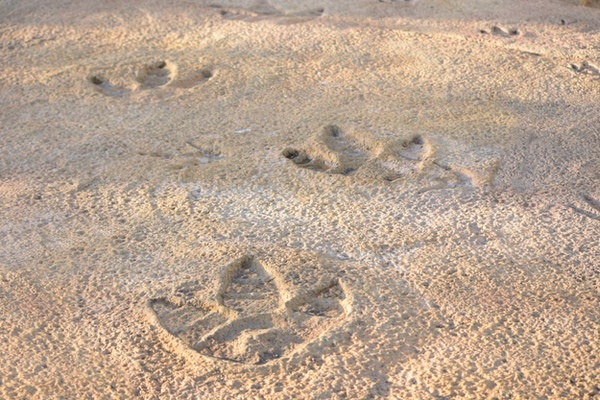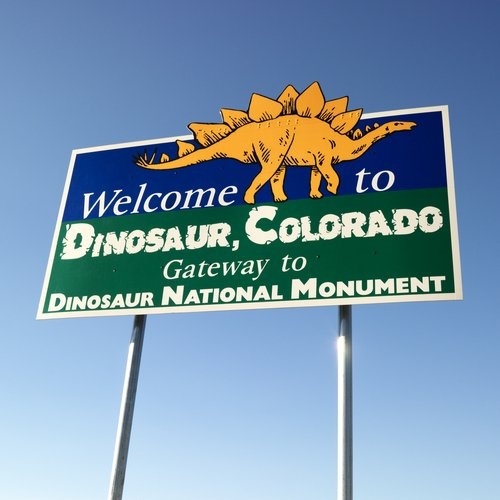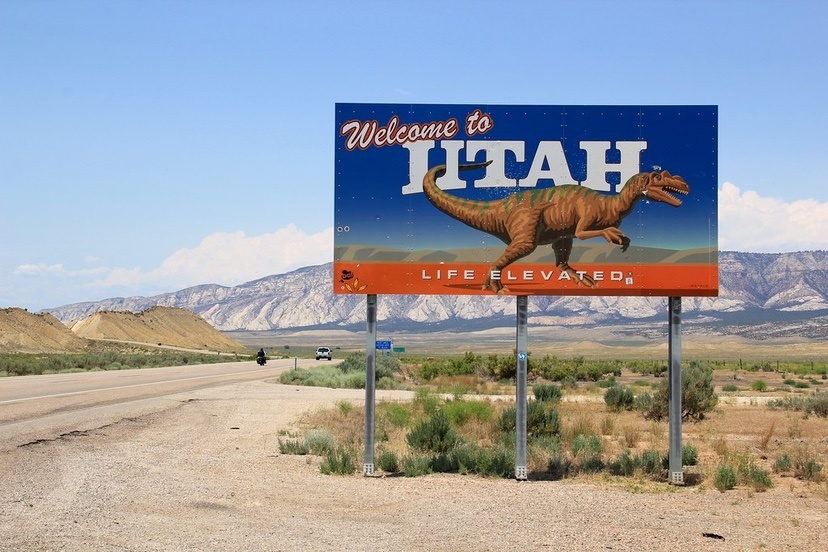Utah doesn’t have much going for it, so they have to make a big deal about dinosaurs.
Yes, they have a few nice national parks, if you’re into that kind of thing. But mostly, Utah tries an attract visitors with a promise of dinosaurs.
There are actually no dinosaurs in Utah, however, in spite of the marketing campaigns. The impressively large dinosaurs who once lived in Utah reportedly disappeared about 66 million years ago, leaving behind nothing more than fossilized bones, and footprints.

You would think a race of animals that ruled the earth for 175 million years would have got around to building some nice cities and towns, and maybe a few amusement parks? But apparently not. It seems — based on what I’ve read — the dinosaurs did nothing more than eat one another, for 175 million years.
Not that I have anything against eating. But there ought to be more to life.
I found myself wondering, though, why did dinosaurs want to live in Utah? What was the attraction, exactly?
It could be that they really liked national parks, but I suspect there was another reason.
I’m talking about polygamy. If male dinosaurs were anything like male humans, and if Utah was the only place that allowed multiple wives, then we have our explanation right there. When you live in a culture built upon eating one another, the production of offspring becomes incredibly important. Multiple wives can facilitate that outcome.
(I’m thinking, just now, that Vice Presidential candidate J.D. Vance ought to be urging the return of polygamy, considering his interest in boosting population growth in the U.S.)
The scientists that study dinosaurs — paleontologists — used to insist that the dinosaurs became extinct 66 million years ago. That’s what I was taught in school.
But somewhere along the line, someone decided that birds — robins, eagles, chickens, turkeys, parakeets etc — are direct descendants of the dinosaurs. From Wikipedia:
The fossil record shows that birds are feathered dinosaurs, having evolved from earlier theropods during the Late Jurassic epoch, and are the only dinosaur lineage known to have survived the Cretaceous–Paleogene extinction event approximately 66 million years ago.
So when I suggest that there are no dinosaurs left in Utah, certain paleontologists will disagree.
As of July 2022, there were 469 species of birds included in Utah’s official list of birds. 119 species are classed as ‘accidental’, 31 as ‘occasional’, 59 as ‘rare’, and 10 have been introduced to Utah, mostly by unsavory pet shop owners.
I have been unable to determine how many of these 469 bird species practice polygamy.
As we all know, the “fossil record” is known to be “scratched”, and skips constantly when you try to play it. The dinosaurs Utah is selling are not the great-great-ancestors of sparrows and chickadees. They are the kind that scared your socks off when you first watched ‘Jurassic Park’.
Colorado also has some dinosaur fossils, and we even have a town named ‘Dinosaur’ located in the farthest northwest corner of the state… population 234 during the 2020 Census. Almost in Utah, although polygamy is frowned upon in Colorado.

Obviously, polygamy was a political and moral issue 66 million years ago, and a number of dinosaurs refused to live in Utah. And now, in the 21st century, the little community of Dinosaur can be grateful for the tourists who wander into town to view the remains of great upright reptiles.
“Upright” meaning “morally upright”, of course.
Underrated writer Louis Cannon grew up in the vast American West, although his ex-wife, given the slightest opportunity, will deny that he ever grew up at all. You can read more stories on his Substack account.

